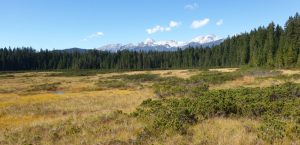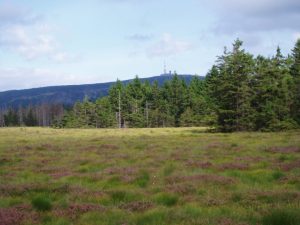Geoscientists of the University of Ljubljana, Institute Jožef Stefan and the TU Clausthal initiated an environmental study of peat bogs in the Slovenian Alps and the Harz Mountains. The Sphagnum mosses of peat bogs are thought to get their nutrients mainly from atmospheric inputs. Therefore, they can be used as bioindicators to evaluate the anthropogenic atmospheric contaminations. At the end of last century, increased lead concentrations were measured in most of the European peat bogs. These concentrations decreased after the implementation of unleaded petrol.
Today, the analytical facilities improved and about 40 elements of sphagnum mosses can be simultaneously measured. This measurement includes elements which are not transported in our atmosphere allowing for the differing of atmospheric input and rock-water-moss interaction. Additional important result are expected by the determination of the sulfur isotope ratios.
The geoscientists from Ljubljana and Clausthal collected about 100 Sphagnum mosses which will be chemically analysed and statistically investigated. Preliminary results indicate a shift of the elemental ratios due to the actual anthropogenic use of elements.
Peat bogs of the Slovenian Alps and the Harz Mountains.
The highest mountains of the Slovenian Alps (Triglav: 2864 m) and the Harz Mountains (Brocken: 1141 m) are shown in the background of the bogs.

